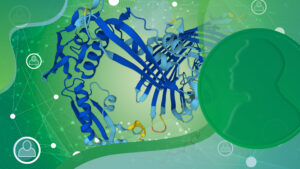
Read the latest Issue
Scientists at EMBL Heidelberg identified a compound that can restore the cell’s powerplants when they fail, raising the possibility of new treatments for mitochondrial disorders.

Nearly every cell in our body contains numerous tiny mitochondria that produce the cell’s main energy source: ATP, which is to cells as coal is to steam engines. Sometimes, however, these cellular powerhouses break down as a result of inherited mutations, leading to debilitating diseases that often emerge in childhood and frequently prove fatal in the long term — and effective therapeutics for these diseases are virtually non-existent.
Recently, however, a team led by Lars Steinmetz, Associate Head of the Genome Biology Unit at EMBL Heidelberg, has identified a compound that can restore the function of poorly working mitochondria. The results, produced by an international and multidisciplinary team of 20 scientists, are reported today in Nature Communications.
Our understanding of mitochondria largely comes from studies in baker’s yeast, which allows the use of a host of sophisticated genomic tools not possible in human cells. Through such approaches there are now well-studied mutations that model the effects of disease-causing mutations in patients with defective ATP synthase, the mitochondrial machine that produces most of the cell’s ATP.
Steinmetz and colleagues began their studies by testing a library of drugs already approved by the FDA for other purposes on yeast models of ATP synthase disorders. Their screen identified sodium pyrithione (NaPT), which proved to be an effective treatment not only in yeast cells but also in cells derived from patients with ATP synthase disorders.
It could have therapeutic potential for a range of mitochondrial diseases.
Strikingly, NaPT does not directly target ATP synthase, but instead restores its activity by modulating how a complex called TIM23 imports proteins into mitochondria – an essential process, as 99% of mitochondrial proteins must be imported. “We found this unexpected bypassing in which we can rescue mitochondrial function without directly targeting the disease-causing defect,” says Raeka Aiyar, who carried out the work in Steinmetz’s group is now at the Genetics Society of America. “This was only possible because of our unbiased drug screen, as we’d never have thought to look at protein import otherwise.”
This study breaks new ground, providing the first demonstration that this pathway not only has therapeutic value, but can be chemically modulated as well. “We believe these findings create an opportunity for drug development efforts to target this pathway and help to translate it into benefits for patients,” says Aiyar. And as Steinmetz points out, the medical potential extends far beyond ATP synthase disorders: “As this pathway is central to mitochondrial function, it could have therapeutic potential for a range of mitochondrial diseases.”
Looking for past print editions of EMBLetc.? Browse our archive, going back 20 years.
EMBLetc. archive